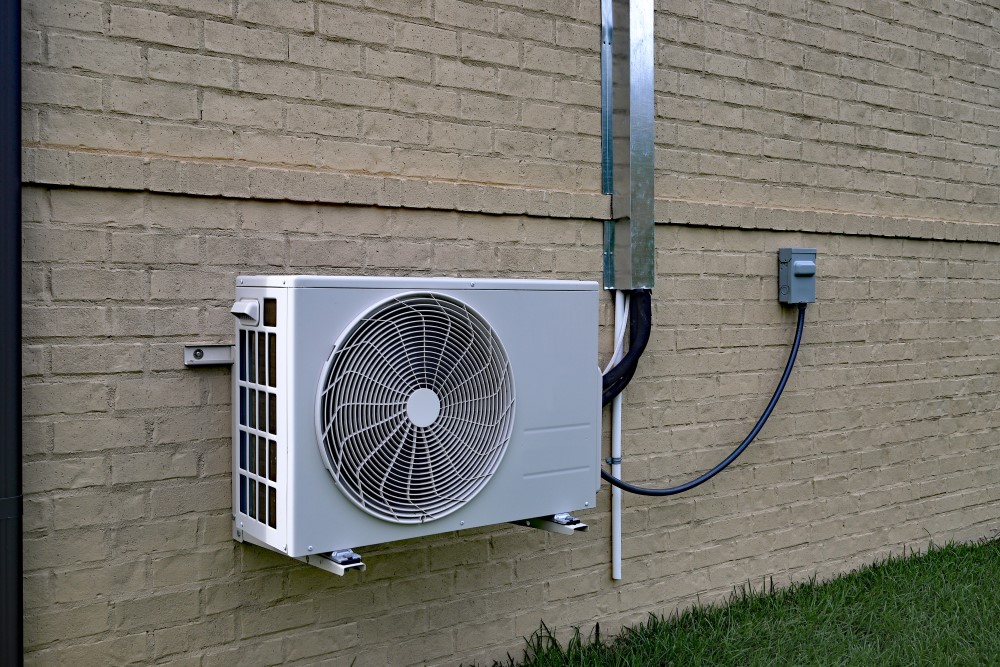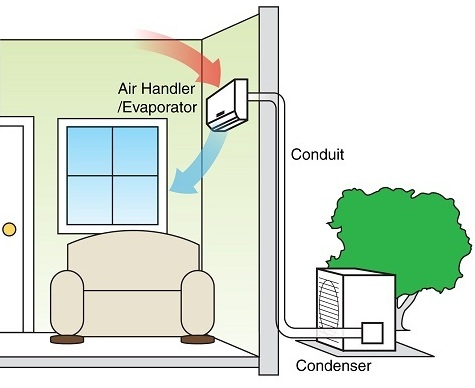If you have actually ever before discovered on your own in a room where the a/c simply couldn't seem to stay on top of the summer season warmth, you could take advantage of examining your area.
Guaranteeing your a/c system is properly sized and mounted calls for interest to essential dimensions such as space dimension, doors and window dimensions, ceiling elevation, insulation high quality, and air movement patterns. By understanding these elements, you can maximize your air conditioning system's performance and performance.
However how precisely do these dimensions influence your cooling installation?
Key Takeaways
- Properly measure area measurements for correct device capacity and air flow optimization.
- Choose energy-efficient windows and doors to boost insulation and lower warmth transfer.
- Guarantee optimal air vent placement and unhampered air movement for effective cooling distribution.
- Upgrade insulation to improve thermal resistance, seal gaps, and improve overall system efficiency.

Area Dimension Dimensions
When gauging room dimension for air conditioning setup, ensure you precisely evaluate the measurements to determine the proper system capability. Begin by thinking about furnishings placement within the area. Furniture can obstruct air flow if placed also close to vents or the cooling system. To guarantee optimal cooling effectiveness, organize your furnishings in a manner that advertises correct air flow throughout the space.
Furthermore, take into consideration the room's design and dimension when preparing for air circulation. Correct air blood circulation is essential for preserving a regular temperature level throughout the area. Be mindful of any kind of challenges that might disrupt the flow of air, such as drapes blocking vents or large items of furnishings obstructing airflow. By ensuring appropriate area for air to distribute easily, you can optimize the performance of your cooling unit and produce a comfy environment in your home.
Doors And Window Dimensions
To guarantee appropriate a/c setup, examine the measurements of windows and doors in the area to enhance air movement and cooling efficiency. When reviewing window and door dimensions, take into consideration the following:
- Frame Compatibility: See to it that the cooling unit you select works with the frames of your doors and windows. Improper fit can bring about air leaks and decreased energy effectiveness.
- Installment: Take into consideration the installation process when selecting a cooling device. Some devices may require particular home window measurements or extra alterations for correct installation.
- Product Option: Choose windows and doors made from materials that supply great insulation to boost power performance. Correctly shielded windows and doors can assist maintain a regular temperature level in the space.
- Energy Efficiency: Go with energy-efficient doors and windows to reduce heat transfer and enhance the general effectiveness of your a/c system. Energy-efficient products can enhance the cooling capacities of your room while reducing power costs.
Ceiling Height Evaluation
Reviewing the height of your ceiling is critical for figuring out the very best positioning of air conditioning vents for reliable cooling distribution. When evaluating your ceiling height, make sure to take into consideration the clearance needed for both the ductwork and the cooling vents. Adequate ceiling clearance assurances that the ductwork can be mounted effectively with no obstructions, permitting ideal air flow throughout the room.
In addition, correct clearance over the vents makes certain that the cooled air can distribute freely without any constraints, leading to more also cooling in the space.
When preparing the positioning of ductwork, think about the height of your ceiling to stay clear of any kind of problems with installment or efficiency. Properly positioned ductwork can aid take full advantage of the efficiency of your air conditioning system and make certain that each area receives enough air conditioning.
Insulation Analysis
Analyze the insulation high quality to enhance the efficiency of your a/c system. Proper insulation plays a crucial duty in keeping a comfortable interior atmosphere while maximizing energy effectiveness. Here are 4 key points to review when examining the insulation in your area:
- Thermal Resistance: Check the R-value of your present insulation to make sure it fulfills the suggested criteria for your region. Higher thermal resistance suggests much better insulation top quality, which aids in minimizing warmth transfer and preserving a regular temperature.
- Insulation Positioning: Inspect the positioning of insulation throughout your area, focusing on locations such as wall surfaces, ceilings, and floors. Correctly mounted insulation protects against energy wastage by minimizing warmth exchange with the surrounding environment.
- Securing Gaps: Recognize and secure any type of spaces or splits in the insulation to avoid air leakage. Effectively secured insulation enhances energy efficiency by maintaining airtight barriers that stop conditioned air from leaving.
- Updating Insulation: Consider updating your insulation to newer, more energy-efficient products. Updating can enhance thermal resistance, lower energy intake, and boost the general performance of your air conditioning system.
Airflow Evaluation
Checking the airflow within your area is essential for ensuring peak efficiency of your a/c system. Correct air movement circulation is important to maintain constant temperature levels throughout the location. When examining air flow, consider the ventilation demands of each area to ensure adequate air flow.
To assess air flow distribution, begin by looking for any type of obstructions such as furnishings blocking vents or debris obstructing air ducts. Poor air flow can result in ineffective air conditioning and home heating, leading to pain and enhanced power prices. It is essential to attend to any issues promptly to optimize the performance of your a/c system.
In addition, comprehending the ventilation demands of different areas in your house or workplace is key to preserving air high quality and convenience levels. Proper ventilation helps eliminate stale air, odors, and toxins while bringing in fresh exterior air. By reviewing airflow and air flow requirements, you can create a more comfy and healthy and balanced interior setting for everybody. air conditioner service
Often Asked Concerns
Just How Can I Establish the Best Place for My Air Conditioning System Within the Room?

When finding out the most effective place for your air conditioner device in a space, consider the air conditioning capacity and air blood circulation. Keep the unit far from barriers that can obstruct airflow and location it centrally in the area to guarantee even cooling.
Perfect positioning helps disperse trendy air effectively, optimizing the unit's performance. Appropriate positioning can make a substantial difference in exactly how effectively your ac unit cools the room.
Exist Any Type Of Particular Variables to Consider When Installing an A/c Device in a Multi-Level Building?
When installing an air conditioning device in a multi-level structure, consider elements like energy performance, cooling capacity, positioning, and accessibility.
Make certain the system is purposefully positioned to cool down several levels efficiently. Choose an area that allows easy gain access to for repair and maintenance.
In addition, examine the air conditioning capacity to ensure it can effectively cool the entire structure. These factors to consider will certainly assist enhance the efficiency of your cooling system in a multi-level setup.
What Is the Ideal Range In Between the A/c Unit and Any Heat-Producing Home Appliances in the Space?
When placing your air conditioning device, make sure appropriate air flow range from heat-producing devices in the area. This helps with warmth diffusion and stops the air conditioner from functioning harder to cool down the space.
Aim for an optimal distance of at the very least 3 feet between the AC system and any warm resources like stoves or lamps. Maintaining this separation will certainly maximize the effectiveness of your a/c system and expand its lifespan.
Are There Any Kind Of Possible Dangers That I Should Know When Setting Up an Air Conditioning Unit in a Tiny or Enclosed Area?
When mounting a cooling unit in a small or encased area, bear in mind prospective dangers. Ensure to deal with air flow issues to stop air quality concerns. Take security preventative measures seriously, especially with limited area restrictions.
Know installment challenges like proper placement for ideal performance. Focus on safety and ensure your area is well-ventilated to prevent any kind of risks associated with setting up an air conditioning system in a confined area.


How Can I Ensure Appropriate Ventilation for My Air Conditioning System to Operate Efficiently in a Space With Limited Airflow?
To optimize airflow for your air conditioning system in an area with limited air flow, assurance appropriate ventilation by keeping vents clear and unhampered.
Regularly clean or replace air filters to maintain efficiency.
Think about making use of a follower to help circulate air and prevent stagnant pockets.
Position the system in an area where air can flow easily, avoiding confined areas.
These actions will certainly assist your air conditioning system run efficiently and cool down the room properly.
Verdict
Now that you have actually taken key measurements for your a/c installment, you're one step closer to guaranteeing peak air conditioning efficiency in your area.
By accurately reviewing room size, window and door measurements, ceiling elevation, insulation, and airflow, you can make informed choices on the very best AC device for your needs.
Keep in mind, correct dimensions are crucial for a successful and reliable a/c setup.
